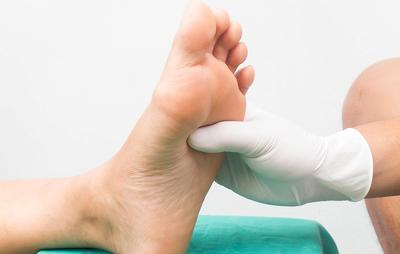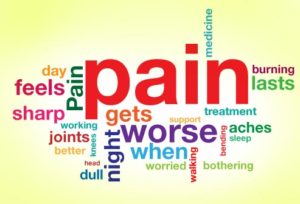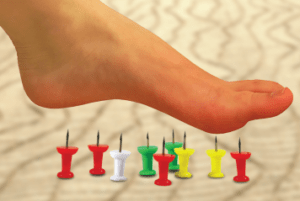
Recently Diagnosed or Relapsed? Stop Looking For a Miracle Cure, and Use Evidence-Based Therapies To Enhance Your Treatment and Prolong Your Remission
Multiple Myeloma an incurable disease, but I have spent the last 25 years in remission using a blend of conventional oncology and evidence-based nutrition, supplementation, and lifestyle therapies from peer-reviewed studies that your oncologist probably hasn't told you about.
Click the orange button to the right to learn more about what you can start doing today.
- You are here:
- Home »
- Blog »
- Multiple Myeloma »
- Multiple Myeloma Survivors-Are you in Chronic Pain?
Multiple Myeloma Survivors-Are you in Chronic Pain?

“More than 5 million cancer (MM) survivors in the United States experience CP, almost twice the rate in the general population, according to a new study…”
Are you a multiple myeloma (MM) survivor? Are you in chronic pain (CP)? While the studies linked below are about survivors of all cancers and C, because I am a MM survivor, I am focusing on MM survivors.
When I first read the studies below I thought I knew what CP was. I’ve lived with various forms of what I thought CP was for years. When I searched for a definition of CP, I spent 15 minutes down the rabbit hole.
The link to “Chronic Pain as a Symptom or a Disease” below is the closest I could come to defining chronic pain. I learned that what I consider CP is really only a part of the world of CP.
I guess I have been thinking of my physical forms of pain to be CP. Those physical forms would be sources such as:
- postsurgical pain
- post-trauma pain
- lower back pain
- cancer pain
- arthritis pain
- neurogenic pain (pain caused by nerve damage)
But only if the forms of pain above last more than 3-6 months would I consider the pain to be “chronic.” By this I mean that surgey to my neck and hip caused a great deal of pain (postsurgical pain) but I healed eventually and the pain subsided. The radiation to my lower back caused “post-trauma pain” that never goes away. Maybe I should classify this as “post-cancer pain.”
A source of pain that stands out for its clear source is “neurogenic pain.” All those survivors who live with chemotherapy-induced peripheral neuropathy (CIPN) are all too familiar with this form of chronic pain.
I don’t even venture into types of pain that are not what I have considered physical pain. For example, I read articles that consider headache pain and “psychogenic pain” (pain that isn’t caused by disease, injury, or nerve damage) to be forms of pain that should be included in the discussion of CP.
What sorts of CP do you live with? What forms of CP have I left out that you think should be included in this discussion? How do you manage your CP? Opiods? CBD oil?
Thank you for your input.
David Emerson
- MM Survivor
- MM Cancer Coach
- Director PeopleBeatingCancer
Recommended Reading:
- C-B-D Becomes F.D.A. Approved AKA Mainstream?
- Mind-Body Therapy for the Multiple Myeloma Survivor
- Chemotherapy, Heart Failure, and the Multiple Myeloma Survivor
More than 5 million cancer survivors experience chronic pain, twice the rate of the general population
“More than 5 million cancer survivors in the United States experience chronic pain, almost twice the rate in the general population, according to a new study…
They found that about 35 percent of cancer survivors have chronic pain, representing 5.39 million patients in the United States…
Specific types of cancer — such as bone, kidney, throat, and uterine — also had a higher incidence of chronic and severe pain that restricted daily activity. CP was more prevalent in survivors who were unemployed and had inadequate insurance…”
Prevalence of Chronic Pain and High-Impact Chronic Pain in Cancer Survivors in the United States
“The population of cancer survivors in the United States is growing rapidly.1 In 2016, the number of survivors was 15.5 million; with the aging of the population and advances in early detection and treatment methods, this number is expected to reach 26.1 million by 2040.1
CP is one of the most common long-term effects of cancer treatment and has been linked with an impaired quality of life, lower adherence to treatment, and higher health care costs.2
Nevertheless, there is a paucity of information regarding the prevalence of, and risk factors for, the development of chronic pain among cancer survivors.
A better understanding of the epidemiology of pain in cancer survivors can help inform future health care educational priorities and policies. Accordingly, the objective of this study was to investigate the prevalence of chronic pain and high-impact chronic pain (HICP, CP with major activity restriction) among cancer survivors in the United States by using data from the National Health Interview Survey (2016-2017).”
Chronic pain as a symptom or a disease
“Pain is one of the most frequent causes for patients to seek medical care.28 Although mortality rates are highest for cardiac infarction and stroke, infectious diseases, cancers, and diabetes, chronic pain is a leading source of human suffering and disability.18…
Chronic cancer-related pain-
Chronic cancer-related pain is defined as pain caused by the cancer itself (by the primary tumor or by metastases) or by its treatment (surgery, chemotherapy, and radiotherapy).4 Pain is a frequent and debilitating accompaniment of cancer and its treatment.10 It becomes more and more apparent that CP syndromes are prevalent in long-term survivors of cancer, and that these chronic secondary pain syndromes include neuropathic and musculoskeletal pains.16 CP caused by the cancer or by chemotherapy or radiation therapy is coded in this section. Pain that is caused by surgical cancer treatment is coded in the section of chronic postsurgical pain…”



